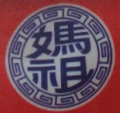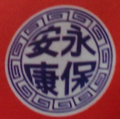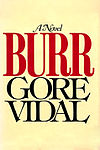Commons:Threshold of originality
The threshold of originality is a concept in copyright law that is used to assess whether or not a particular work, or a portion of it, can be copyrighted. It is used to distinguish works that are sufficiently original to warrant copyright protection from those that are not. In this context, "originality" refers to "coming from someone as the originator/author" (insofar as it somehow reflects the author's personality), rather than "never having occurred or existed before" (which would amount to the protection of something new, as in patent protection).
The remainder of this page discusses images judged ineligible for copyright protection by a court or similar authority. It's usually unable to determine whether a specific image is within the threshold of originality without a judicial decision. However, per precautionary principle, the image should be deleted if there's significant doubt that the image is not copyrighted.
For further information, see Threshold of originality on Wikipedia.
United States
COM:TOO United States
United States of America
- These images are
 OK to upload to Commons, because they are below the threshold of originality required for copyright protection.
OK to upload to Commons, because they are below the threshold of originality required for copyright protection.
Bridgeman v Corel 36 F. Supp. 2d 191 (S.D.N.Y. 1999): court ruling that 2D reproductions of the original art has no valid claims for new copyrights (case description)
NFL abandoned its copyright claims on the fleur-de-lis (news report)
Best Western hotels: Consists of letters plus a simple border. None of these is eligible for copyright protection in United States. (authority)
DUB magazine: Consists of letters only. None of these is eligible for copyright protection in United States. (authority)
Nikken USA Inc. (authority)
Bruce Lee core symbol (authority)
New York Arrows logo (case report)
Car Credit City logo: Copyright office ruled this logo too simple to be protected, but a slightly more complicated version (shown in the linked letter) was accepted for registration (authority)
Symbols for "Myst" (authority)
Letter S (authority)
Registration was cancelled (authority)
Registration refused (authority)
Ets-Hokin v Skyy Spirits Inc.: Photo is eligible for copyright protection, but not the bottle
A plastic version lacked originality (L Batlin & Son v. Snyder)
Koosh balls; "inseparable", OddzOn Products, Inc. v. Oman (case report)
Map of Arkansas: Addition of shading, colors, labels to a free black and white outline map (case report)
Avenue of the Saints logo; registration refused despite compilation copyright claim for arrangement of otherwise unprotectable elements (authority)
Geek Squad logo (authority)
Subway logo (authority)
Discover It logo: the Copyright Office found that the elements, including the shading effect, were insufficiently creative to be copyright-eligible (authority)
Despite repeated requests, the U.S. Copyright Office found the Vodafone speechmark (shaded version) ineligible for copyright protection. It can however not be uploaded to Commons because it's a UK logo.
- These are
 Not OK to upload to Commons (unless published under a free license by the copyright holder), because they are above the threshold of originality required for copyright protection.
Not OK to upload to Commons (unless published under a free license by the copyright holder), because they are above the threshold of originality required for copyright protection.
- American Airlines flight symbol VA0002130520; Copyright Office initially refused copyright as being just below the threshold, but upon a higher-resolution submission of the artwork, decided that the shading plus the arrangement pushed the logo just above the threshold and granted a registration.
- These two "no soliciting" signs, although arguably relatively simple, have been issued copyright registration numbers by the United States Copyright Office, which means that they have been reviewed and determined to be eligible for copyright protection. It should be noted that the copyright registration applies to the images as a whole, including their borders.
- A variant of File:CarCreditCity.png with an extra border.
- w:File:Disney Junior.svg (VA0001927957).
- w:File:Prince logo.svg (VA0000832222).
- The “Omega Globe Design” (VAu000574660) was assumed to be copyrightable by the Ninth Circuit US Court of Appeals.[1]
- Works from other countries which are above the threshold of originality of the United States but below the threshold of originality of the source country (Hasbro Bradley, Inc. v. Sparkle Toys, Inc.)
- New "pan and scan" versions of films where a widescreen film has been resized to fit the size of a TV screen even if the existing widescreen film is uncopyrighted (Maljack Productions, Inc. v. UAV Corp.)[2]
- In 1951, this mezzotint reproduction of an existing uncopyrighted painting was found to be copyrightable.
- The clothing designs found on pp. 4–5 of the Sixth Circuit's decision in Varsity Brands et al. v. Star Athletica (2015).
- The PAC 12 shield logo en:File:Pac-12 logo.svg (V3617D047).
VA0001789579 (and CC-BY 3.0)
- File:Five-element-cycles.jpg ([1]): The arrangement is under a copyright, according to WMF Legal.
- w:File:BP Helios logo.svg is eligible for copyright in the US according to WMF legal, though "not by a lot, but just enough". Note that per Commons policy due to the country of origin this logo would be judged by UK TOO standards which are more strict, legal only commented on the US TOO.
Civil law countries
Civil law countries require a relatively high minimum level of intellectual creativity which will exclude typical signatures and simple logos from copyright protection.
If you are aware of specific case law or legal advice on this issue in any country, please add a "Threshold of originality" section to the appropriate Commons:Copyright rules by territory country subpage, and add a link to it with an entry below.
COM:TOO Afghanistan
Afghanistan
According to the 2008 Copyright Law, work that may be protected includes: Photography work that has been created using an innovative mode; Innovative work of handicraft or industrial art (carpet designs, rugs, felt carpet and its attachments etc.); Innovative work which has been created based on the public culture (folklore) or national cultural heritage and art.[2008 Article 6(1) items 7-9]
COM:TOO Austria
Austria
These logos are ![]() Not OK:
Not OK:
COM:TOO Brazil
Brazil
There are some court cases related to threshold of originality in Brazil. According to one study, and the court decisions contained in it, the concept of creativity in Brazil is way more strict and exigent than in the United States, and consequently the threshold of originality is considerably higher than the United States, which is the general reference in Commons.[7]
Examples:
 OK. In the case of Boneco de Preço Miúdo (2011), puppets that were a tridimensional and humanized version of a logo were deemed by the court to lack enough originality to be protected. The court considered that there was no originality or unpublished work in the puppets because they represented an already existing symbol (the supermarket's logo), and that there were already previous 3D and humanized versions of that logo. The court did not grant any value nor legal protection to the specific 3D and humanized version of the logo in question, and called it something like a "stylization subordinate to a previous idea".[8]
OK. In the case of Boneco de Preço Miúdo (2011), puppets that were a tridimensional and humanized version of a logo were deemed by the court to lack enough originality to be protected. The court considered that there was no originality or unpublished work in the puppets because they represented an already existing symbol (the supermarket's logo), and that there were already previous 3D and humanized versions of that logo. The court did not grant any value nor legal protection to the specific 3D and humanized version of the logo in question, and called it something like a "stylization subordinate to a previous idea".[8] OK. Copyright for compilations/ reorganizations of already existing elements has often been rejected on court, hinting that the threshold for what constitutes an "intellectual creation" in this respect is quite high in Brazil.[9]
OK. Copyright for compilations/ reorganizations of already existing elements has often been rejected on court, hinting that the threshold for what constitutes an "intellectual creation" in this respect is quite high in Brazil.[9] OK. Slogans are generally acceptable. In rare occasions they may be protected, when there is such a level of creativity as to attain the level of a literary work. For example, in the Guerra das Moedas court case (2013), copyright in the expression was not recognized by the court. The verdict stated that the language is the cultural patrimony of the people, so language expressions can't be protected by law. The Rede Globo vs. Ronaldo Ciambroni case was similar.[10][11]
OK. Slogans are generally acceptable. In rare occasions they may be protected, when there is such a level of creativity as to attain the level of a literary work. For example, in the Guerra das Moedas court case (2013), copyright in the expression was not recognized by the court. The verdict stated that the language is the cultural patrimony of the people, so language expressions can't be protected by law. The Rede Globo vs. Ronaldo Ciambroni case was similar.[10][11]
Some examples help define which photos are, and are not, "artistic creations", and therefore object of protection under the 1973 copyright law:
 OK.The facade of the Jung Frau building, in Joinville, as well as partial views of the city, when photographed in an obvious simple way, without employment of any special ("diferenciada") technique". The court ruled: "photographs are not considered artistic creations ... that portray in a manifestly simple way, without use of any differentiated technique, the front of a residential building and a partial view of the city, under a service contract with a real estate business with a predefined advertising purpose"[12]
OK.The facade of the Jung Frau building, in Joinville, as well as partial views of the city, when photographed in an obvious simple way, without employment of any special ("diferenciada") technique". The court ruled: "photographs are not considered artistic creations ... that portray in a manifestly simple way, without use of any differentiated technique, the front of a residential building and a partial view of the city, under a service contract with a real estate business with a predefined advertising purpose"[12] OK. Simple documentary, descriptive photographs in general, such as photographs documenting social reunions: In SC-AC 111630 SC 2002.011163-0 (2006): "mere photographic documentation, without artistic character, does not qualify for copyright ... making it possible to use a copy without mention of the photographer's name, since, according to Brazilian law, only artistic photography (by choice of the object and conditions of execution) is listed among protected works. ... [for example] with documentary photographs of social gatherings, where the author was performing duties for the defendant, a reference to the photographer's name is not required because it is not an artistic work..."[13]
OK. Simple documentary, descriptive photographs in general, such as photographs documenting social reunions: In SC-AC 111630 SC 2002.011163-0 (2006): "mere photographic documentation, without artistic character, does not qualify for copyright ... making it possible to use a copy without mention of the photographer's name, since, according to Brazilian law, only artistic photography (by choice of the object and conditions of execution) is listed among protected works. ... [for example] with documentary photographs of social gatherings, where the author was performing duties for the defendant, a reference to the photographer's name is not required because it is not an artistic work..."[13] OK. A 2000 ruling stated: "Photographs for identity documents, produced by automatic machines, are not artistic works. ... Neither should purely technical photographs, which reproduce a certain object without the slightest artistic concern, be protected by copyright."[14]
OK. A 2000 ruling stated: "Photographs for identity documents, produced by automatic machines, are not artistic works. ... Neither should purely technical photographs, which reproduce a certain object without the slightest artistic concern, be protected by copyright."[14] Not OK Another 2000 decision stated: "the photos [...] have an artistic character characterized by the originality, creativity and technique of its author, elements that reveal ... a work of art. They are not, as the appellant claims, mere reproductions of images for advertising purposes, or common snapshots."[15]
Not OK Another 2000 decision stated: "the photos [...] have an artistic character characterized by the originality, creativity and technique of its author, elements that reveal ... a work of art. They are not, as the appellant claims, mere reproductions of images for advertising purposes, or common snapshots."[15]
![]() Puppets who were a tridimensional and humanized version of this logo were deemed in court to lack enough originality to be protected.
Puppets who were a tridimensional and humanized version of this logo were deemed in court to lack enough originality to be protected.
COM:TOO Czech Republic
Czech Republic
The work must be "a unique outcome of the creative activity of the author".[121/2000–2006 Art.2(1)]
For photographs and computer programs, it suffices if the work "is original in the sense that it is the author’s own intellectual creation".[121/2000–2006 Art.2(2)]
COM:TOO Chile
Chile
The phrase "Estamos bien en el refugio los 33", a message from the Copiapó miners (penned by Jose Ojeda), was copyrighted.[16]
COM:TOO China
China
China has a relatively low threshold of originality standard; basic designs may be copyrightable. One of the most noticeable cases is the logo of a company named Gang Heng (listed below) ruled by China's supreme court as copyrighted (see below).
- "Matchstick man" (image) with a black sphere as a head, black lines as torso, limbs and feet is not copyrightable for lacking originality, ruled Beijing Municipal High People's Court (source).
The following examples are ![]() Not OK:
Not OK:
- Calligraphy works, such as:
- the work "道" on this photo (archived from original) (see the article by Beijing Youth Daily (archived from original), and the follow-up report (archived from original).
- the character "勁" (archived from the original), with rulings made by Beijing No.1 Intermediate People's Court, and Beijing Municipal High People's Court
- calligraphy for "澳門豆撈" (image), ruled by Henan Zhengzhou Intermediate People's Court (source).
- are copyrighted (Copyright Law of the PR China: "Article 2 Works of Chinese citizens, legal entities or other organizations, whether published or not, shall enjoy copyright in accordance with this Law." ; "Article 3 'Works' mentioned in this Law shall include [...] in the following forms: (4) works of fine art and architecture" ; Regulations for the Implementation: "Article 4 (8) 'works of fine arts' means [...] such as paintings, works of calligraphy and sculptures;")
- Handwriting: a hand-written manuscript was deemed copyrightable as work of art, according to a decision made by Nanjing Intermediate People's Court (sources: [2] [3], Final judgement).
- "LY" company logo (archived from the original), although arguably relatively simple, has been ruled copyrightable by Trademark Appeal Board of the State Administration of Industry & Commerce, Beijing Intellectual Property Court, and Beijing Municipal High People's Court.
- Typefaces of characters "笑", "喜", and "城市宝贝" in these two logos are copyrightable, ruled Nanjing Intermediate People's Court. However the character "巴" in the same logo was decided not copyrightable for lacking originality in the same decision. (source, court decision full text: Final judgement)
- Gang Heng logo: China's Supreme People's Court ruled this logo to be protected by copyright (original judgment by the Court; related news coverage).
COM:TOO Denmark
Denmark
| Status | Example | Notes |
|---|---|---|
| Three fonts not eligible for copyright protection (Supreme Court 30 June 2006, U2006.2697H). Two other fonts were found eligible for copyright. | ||
| Sketches of windows and doors not eligible for copyright protection (The Maritime and Commercial Court 8 August 2003.)[17][18] | ||
| The GLOBAL knife design is copyright protected in Denmark.[19] | ||
| A specific chair design (Tripp Trapp).[20] |
COM:TOO Finland
Finland
For works of visual art, the threshold of originality is relatively low.[21]
Simple logos, however, are generally below the threshold of originality.[22] In particular, the threshold is high when only basic colors and shapes (such as triangles, squares and circles or capital letters) are used.[23][21]
| Simple photograph with limited copyright period – not a photographic work of art. (TN 2003:6) | ||
| Differences compared to the coat of arms of the historic region did not meet threshold of originality. (TN 1998:5) | ||
| Commons:Deletion_requests/Aalto_vases | "The wave-like forms of the [original Aalto vases] do not... result from the intended use of the object but the creative mental effort of the author. [Therefore the original vases] are independent and original enough to be considered works of art as meant in 1 § of [the Finnish Copyright law]" (p. 4). (TN 2010:10) | |
| A specific house type | (Eurohouse S 2, court ruling) | |
| The logo is below the threshold of originality because it is "ordinary and [does] not express an independent and original result of a creative process of its author. Somebody else in undertaking a comparable task could have contrived a similar ... logo". (TN 2000:1) | ||
| Save the Children Fund logo | The logo is above the threshold of originality, because its "visual manifestation is the creative work of its author, whereby the ideological basis of the fund has been successfully conformed with in an independent and original manner... [N]o one else undertaking a comparable task could have reached a similar outcome". (TN 2010:3) | |
and |
The logos are "in their literary and visual manifestation simple and ordinary to the degree that they are not to be regarded as original works in their own regard." (TN 2009:2) | |
| The logo is "is not original and independent in such a way that it would be protected ... by copyright". (TN 2011:7) | ||
| The logo is below the threshold of originality because "its central elements and the way in which they have been combined are commonly used in logos and are thus ordinary". (TN 2000:1) | ||
| "Silmu" logo | Although the logo consists of a "stylized, albeit fairly simple, red tulip", it is above the threshold of originality for works of visual art. (TN 2001:12) |
COM:TOO France
France
Unlike the "sweat of the brow" doctrine in the UK, French law asserts that a work is copyrightable when it bears the "imprint of the personality of the author". In practice, it depends on the work in question, but this has left the bar quite low for many works where an artistic intent can be shown. For an art exhibition, a man placed the word paradis with gold lettering above the bathroom door of the old dormitory of alcoholics at a psychiatric facility, and termed it artwork; the French courts agreed with him that it was copyrightable based on the aesthetic choices made ("affixing the word 'paradise' in gold with patina effect and a special graphics on dilapidated door, the lock-shaped cross, encased in a crumbling wall with peeling paint").[24]
France has "a slightly higher threshold of originality in general, and particularly so in the context of photographic works".[25]
A decision from Supreme court on October 2011 agreed with appeal court decision saying that a quite artistic picture of two fish on a yellow plate about a traditional Marseille meal could not be protected by French law because of lack of originality.[26] According to this decision, level of originality required by this appeal court is very high. This decision was criticized but French supreme court does not control facts but only controls interpretation of the law. In 2017, copyright protection on this image of Jimi Hendrix was restored after a court initially denied protection.
COM:TOO Germany
Germany
Works of fine art (including works of applied art and architectural works)
"Works of fine art", as defined in s 2(1)(4) of the 1965 Act on Copyright and Related Rights (Gesetz über Urheberrecht und verwandte Schutzrechte) (UrhG), is a catch-all term for works of fine art in a stricter sense, works of applied art, and architectural works. Fine art is distinguished from applied art by its lack of a utilitarian purpose.[27] For many decades, courts imposed a higher threshold of originality on works of applied art than on works of fine art ("two-tier theory").[28] In 2013, however, the Federal Court of Justice expressly changed its jurisprudence, holding that "in general, the copyright protection of works of applied art is not subject to other requirements than the copyright protection of works of non-utilitarian fine art or of literary or musical creation. It is hence sufficient that they attain a level of creativity that allows a public open to art and relatively familiar with views on art to justifiably speak of 'artistic' creations".[29]
In assessing whether an article with a utilitarian purpose is protected by copyright, one must take into account, however, that the aesthetic effect of the article can only provide a basis for copyright protection to the extent that it is not dictated by the article's utilitarian purpose, but instead is based on an artistic effort.[30] Only those features of a utilitarian article that are not entirely dictated by the technical function can justify copyright protection.[31] A feature is considered "dictated by the technical function" if the article could not function without it.[32] This includes features that, for technical reasons, must necessarily be used in articles of the same kind as the article concerned, as well as features that, while being used for technical reasons, are freely selectable or interchangeable. To the extent that the design of such features is entirely dictated by their technical function, they are incapable of justifying copyright protection of the utilitarian article.[33]
Examples from court cases on applied art:[34]
Protection denied:
- a climbing structure for playgrounds made of ropes (pictured here, p 3 bottom) because the structure consists of freely selectable or interchangeable yet technically required features and does not exhibit artistic creativity;[35]
- a wooden toy train ("birthday train") with wagons in which candles and numbers can be inserted (pictured here, p 3) because there were similarly-looking, pre-existing toy trains.[36]
- a logo (pictured here in black and white) consisting of the text "Match by Audiotec X" and the commonly used "fast-forward" symbol because neither the design of the text nor the design of the symbol ("widely used in the audio world") nor the combination of the two could be considered an artistic creation.[37]
Protection accorded:
- a design element ("AIDA Smiling Lips") consisting of a mouth, eyes, and wave lines ("eyebrows") (pictured here, p 3; in the case at issue, the design was painted on the exterior of a ship and as such could be reproduced under the freedom of panorama limitation);[38]
- a train-like line of wooden animal figures on wheels ("birthday caravan") (pictured here, p 3) because it was a complete redesign of pre-existing toy trains, whose locomotive and waggons were replaced with animal figures, and the overall design (shapes, colours) was not the result of technical necessities but an expression of the author's artistic creativity;[39]
- an urn with an airbrushed deer design (pictured here, on the left);[40]
- the design of a combined table of standings for three football leagues, which allowed fans to continuously update the tables by sticking cardboard riders with the logos of the football clubs into slits corresponding to their current positions (the case concerned the 2011/12 version of the table by the German magazine Kicker, pictured here, accessed 24 August 2019) even though most of the design features of the sheet were determined by technical considerations;[41]
In the past decades, court cases where protection as applied art was eventually accorded primarily revolved around renowned designer objects, in particular items of furniture and lamps.[42] A few more recent examples:
- chairs and tables based on drafts by the designers Marcel Breuer ("Wassily" chair, "Laccio" table) and Ludwig Mies van der Rohe ("Barcelona" chair, stool, couch, and table; "Brno" chair; "Prag" chair);[43]
- the "Wilhelm Wagenfeld table lamp" (pictured here, accessed 24 August 2019);[44]
- a brilliant-cut diamond ring ("Niessing-Spannring") (pictured here as "Niessing Ring© ROUND", accessed 24 August 2019).[45]
COM:TOO Greece
Greece
The term “work” is defined as including any original intellectual creation expressed in any form, including alterations of other works as well as collections of works, provided that the selection or the arrangement of such collections is original.[46]
Originality is understood by Greek jurisprudence as a notion of “statistical uniqueness”, which means that the work involves skill, labor and judgment emanating from the author and that no other person, acting under the same circumstances, could produce the exact same work.[47]
COM:TOO Hungary
Hungary
- stylized text with a common stylized globe icon (does not show the actual image).[48]
![]() Not OK
Not OK
COM:TOO Iran
Iran
![]() Not OK for most logos. The level of originality required for copyright protection in Iran seems very low.
Not OK for most logos. The level of originality required for copyright protection in Iran seems very low.
The following are registrable for copyright protection: "(...) pictures, drawings, designs, decorative writings, (...) or any decorative and imaginative work produced in any simple or complex manner "
COM:TOO Ireland
Ireland
![]() Unknown
Unknown
Despite uncertainty on the required level of originality needed to qualify for copyright protection, images that have been retained on Commons include:
| Image | Description | Discussion |
|---|---|---|

|
ISPCA official logo | Commons:Deletion requests/File:ISPCA official logo.png |
COM:TOO Italy
Italy
Hogan Lovells states "In summary, the threshold for an industrial design product to enjoy copyright protection is still quite high and even famous industrial design products have been denied such protection by Italian Courts."[50]
Probably this applies to logos too. These files have been kept as simple logos:
But the logo of AC Parma was deleted as being a complex logo.[51] Another Parma logo has been deleted but then restored.
COM:TOO Japan
Japan
Logos in the gallery below are ![]() OK to upload.
OK to upload.
Article 2 of Japanese copyright law defines that a work is eligible for copyright when it is a production in which thoughts or sentiments are expressed in a creative way and which falls within the literary, scientific, artistic or musical domain.[52]
Japanese courts have decided that to be copyrightable, a text logo needs to have artistic appearance that is worth artistic appreciation. Logos composed merely of geometric shapes and texts are also not copyrightable in general.

|
(DR) Letters are a means of communication, shared by anyone. Copyright protection of fonts is limited only to those that raise artistic appreciation as much as artistic works do.[53] |

|
(DR) Although the shape is stylized, the text is in a normal arrangement and keeps its function of being read as a sequence of letters.[54] |
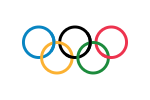
|
The Court is negative towards recognizing the symbol as a copyrightable work of fine arts, because it is considered merely relatively simple graphic elements.[55] |
- Furby toy: utilitarian, so not protected by copyright as an artistic work. Not utilitarian in the United States, so photos of the toy can't be uploaded to Commons.[56]
COM:TOO Libya
Libya
For photographic and cinematic works which are limited to the mere mechanical transmission of scenery, rights expire 5 years from the date of first publication.[9/1968 Article 20]
COM:TOO Luxembourg
Luxembourg
According to Jean-Luc Putz, the threshold of originality in Luxembourg is not as strict as in UK but not as liberal as in Germany. During the legislation the intent was to orientate with other Benelux states or France.[57]
COM:TOO Netherlands
Netherlands
Simple logos are okay in the Netherlands but not all logos are. Whether something is above the threshold of originality in the Netherlands is defined in the Supreme Court judgment "'Van Dale/Romme'". In this judgment, the Supreme Court ruled that:[58]
- In assessing the ground of cassation it should be noted that, for a product to be considered a work of literature, science or art as meant in article 1 in conjunction with article 10 of the Copyright law (Auteurswet), it is required that it has an own, original character and bears the personal mark of the maker.
This was further specified in the Supreme Court judgment ''Endstra-tapes':[59]
- The product has to bear an own, original character. In short, this means the shape may not be based on that of another work. (cf. article 13 Aw.) The demand that the product has to bear the personal mark of the maker means that there has to be a shape that is the result of creative human labor and thus creative choices, which therefore is a product of the human mind. In any case, excluded from this is everything that has a shape that is so trivial or banal, that one cannot show any creative labor behind it of any kind whatsoever.
Later the Supreme Court determined in judgment on Stokke v. Fikszo that:[60]
- For a work to be eligible for copyright, it is necessary that the work has an own original character and bears the personal mark of the maker ... The Court of Justice of the European Union has has formulated the benchmark in such a way that it must concern "an intellectual creation of the author of the work".
COM:TOO Norway
Norway
- Not protected
Two-minute theatre play.[61]
- Protected
- A specific chair design (Tripp Trapp)
- The logo for the TV series Jul i Blåfjell.[62]
COM:TOO Peru
Peru
- Simple photographs
Recent simple photographs have a copyright term of 70 years counted from the first of January of the year following that of the taking of the photograph. The definition varies in different laws, the description of which is shown below:
- For old pictures taken and published prior to 1976
 was expired before of the actual copyright law.[13714/1961 Art.27] These were not used in literary or scientific self works nor these were reproductions of artistic works under 1961 law. If the photo had no author and was not registered with Indecopi 15 years after its publication, it would also be in the public domain.[63] Use {{PD-Peru-photo}}.
was expired before of the actual copyright law.[13714/1961 Art.27] These were not used in literary or scientific self works nor these were reproductions of artistic works under 1961 law. If the photo had no author and was not registered with Indecopi 15 years after its publication, it would also be in the public domain.[63] Use {{PD-Peru-photo}}. - The general definition of a "work" in the 1996 law is "any personal and original intellectual creation capable of being disclosed or reproduced in any form that is or may yet become known".[822/1996 Art.2(17)] Simple photographs are those which
 fail to meet the general definition of a "work".[822/1996 Art.144] However, if a photograph is taken of an object imitating the non-artistic techniques of the previous photograph, it is not infringing the copyright of the original technique (see Resolución Nº 059-2012 and Indecopi (2015), p.75).[64]
fail to meet the general definition of a "work".[822/1996 Art.144] However, if a photograph is taken of an object imitating the non-artistic techniques of the previous photograph, it is not infringing the copyright of the original technique (see Resolución Nº 059-2012 and Indecopi (2015), p.75).[64]
- Simple logos
Simple logos are ![]() OK to upload to Commons, because they are below the threshold of originality required for copyright protection. In words of Indecopi and Ministerio de Justicia:
OK to upload to Commons, because they are below the threshold of originality required for copyright protection. In words of Indecopi and Ministerio de Justicia:
«According to Article 3 of Decision 351 [of the Andean Decision], in accordance with Article 2 of Legislative Decree No. 822, a work is understood to be any original intellectual creation of an artistic, scientific or literary nature, susceptible of being disclosed or reproduced in any form»
— La originalidad como requisito de protección por derechos de autor ("requisito de la originalidad"), in: Precedentes y normativa del Indecopi en Propiedad Intelectual (2015)[64]
Telefónica v Deutsche Telekom (Resolución N° 1127-1998/TPI-INDECOPI)[64]: "No es posible otorgar un monopolio sobre esta letra en favor de un solo titular"
Agrotrade S.R.LTDA. v Infutecsa E.I.R.L. (Resolución Nº 0286-1998/TRI-INDECOPI)[64]: "Cuando exista certeza de que una creación carece de individualidad y ha sido copiada textualmente, no convierte a ésta en obra"
COM:TOO Poland
Poland
Per Tomasz Targosz (Institute of Intellectual Property Law, Jagiellonian University Kraków):
Polish copyright law has quite a long tradition of setting the threshold rather low, which may encourage frivolous lawsuits forcing courts to ponder whether simple graphic designs, short lines of text or even names should or should not be protected by copyright law.
COM:TOO Portugal
Portugal
w:File:Juventude Socialista Portugal.png was deleted as it was considered to be above the threshold of originality.
- Photographs
In Portugal photographs have been consistently specifically required to have a significant degree of creativity in order to be copyrighted. Article §164 of the current 2017 copyright law states that "the choice of a photograph's subject and the conditions of its creation must be deemed to be a personal artistic creation by the author before a photograph may qualify for protection".
- Court cases
- Landscape photograph: Ruled as without originality. In 2009 the Tribunal da Relação de Lisboa ruled as void of copyright for lack of artistic creativity a landscape photograph the author was claiming copyright on due to his choice of the setting, light and other conditions. It was considered by the court "a vulgar photograph resultant from the mere choice of an object, such as a city council building and part of a group of trees, without a minimum of creativity".[66] The subject is discussed in a 2017 article published by the Instituto Portugues de Fotografia.[67]
- Heart reproduction commissioned to a laboratory in order to be presented in an exposition: Ruled as without originality.[66]
- Clothing/Fashion: Ruled as without originality.[68]
COM:TOO Russia
Russia
![]() use {{PD-RU-exempt-autocam}}
use {{PD-RU-exempt-autocam}}
![]() OK A photowork or a videowork made by automatic camera (Russian: автоматическая камера, not to be confused with automated camera: автоматизированная камера) is not the subject of copyright, because such work is made by technical tool without creative human activity. The Supreme Court of the Russian Federation, Part 80 of Session Resolution No. 10 of April 23, 2019 on Application of Part IV of the Civil Code of the Russian Federation
OK A photowork or a videowork made by automatic camera (Russian: автоматическая камера, not to be confused with automated camera: автоматизированная камера) is not the subject of copyright, because such work is made by technical tool without creative human activity. The Supreme Court of the Russian Federation, Part 80 of Session Resolution No. 10 of April 23, 2019 on Application of Part IV of the Civil Code of the Russian Federation
Examples
- Any photowork or videowork made by automatic camera for administrative violation record (for example, by automatic camera for driving offense record[69]). The Supreme Court of the Russian Federation, Part 80 of Session Resolution No. 10 of April 23, 2019 on Application of Part IV of the Civil Code of the Russian Federation
![]() Not OK Simple result (consisted of simple geometric shapes and / or text) of creative work (creative human activity) is copyrightable. The Supreme Court of the Russian Federation, Part 80 of Session Resolution No. 10 of April 23, 2019 on Application of Part IV of the Civil Code of the Russian Federation
Not OK Simple result (consisted of simple geometric shapes and / or text) of creative work (creative human activity) is copyrightable. The Supreme Court of the Russian Federation, Part 80 of Session Resolution No. 10 of April 23, 2019 on Application of Part IV of the Civil Code of the Russian Federation
Examples
- Simple black square as geometric shape is uncopyrightable as itself. However Black Square by Kazimir Malevich is copyrightable because this painting is the result of creative work in recognized art style - suprematism, and it is in Public Domain because of copyright term expiry, not because of result simplicity.
COM:TOO Senegal
Senegal
Works of the mind may enjoy protection only if they are original. "Originality" means the work bears the stamp of the author's personality.[2008-09 Article 7]
COM:TOO Slovenia
Slovenia
The threshold of originality in Slovenia depends on the field of creativity. If the maneuvering space of the possible creativity is narrower, it requires more creativity for a work to be copyrighted.[70]
In this regard, the following court cases are relevant:
Applied arts:
- VSL0069492 - the design of a couch set has been found to be below the threshold.
- VS0011606 - the design of a sales stand has been found to be above the threshold.
Architecture:
- VSL00432 - only the works that constitute an original artwork are copyrighted; the renovation plan of Ljubljana Castle as well as the newly built and (at least some of) the renovated parts of the castle count as such.
Titles:
- VS07924 - the title "Brez zavor" (meaning "Without inhibitions") has been found to be below the threshold.
COM:TOO South Korea
South Korea
According to a machine translation of the Copyright Act as amended up to Act No. 14634 of March 21, 2017,
- "Work" refers to a creation that expresses human thoughts or feelings.[432/1957–2017 Article 2.2]
The Supreme Court of South Korea declared that it is sufficient to be work if:[71]
- it is not just an imitation,
- it has own characteristics as a product of mental efforts, and
- it can be distinguished from existing ones.
COM:TOO Sweden
Sweden
"A simple general rule is that if it is unlikely that two persons would create, for example, a text identically or similarly, the text is probably sufficiently original to qualify as a protected work. (..) Often, the requirements for copyright protection are considered to be relatively low."[72]
| Status | Example | Notes |
|---|---|---|
| Technical drawing. According to decision by the Swedish Supreme Court.[4] | ||
| Mini Maglite torch (Högsta domstolen) | ||
| Porcelain [5] | "Sundborn", made by Rörstrand | |
| Photo illustrating a newspaper article | [6] (removed from the website in 2004 because of copyright infringement, protected as a photographic work for 70 years after author's death) | |
| Knitted tunic | (NJA 1995 s. 164) | |
| Technical drawings | (NJA 1998 s. 563) |
COM:TOO Switzerland
Switzerland
Copyright law of Switzerland defines works as being "creations of the mind, literary or artistic, that have an individual character."[73] In a 2003 decision, the Federal Supreme Court of Switzerland ruled that a photo of Bob Marley taken at a concert by a spectator with a handheld camera was eligible for protection, because it had the required individual character by virtue of the aesthetic appeal of the picture, combined with the orientation of the picture's components and the distribution of light and shadow. It also found that the photograph was a "creation of the mind" by being shot at a specific time during the singer's movement on the stage.[74]
By contrast, in the 2004 case Blau Guggenheim v. British Broadcasting Corporation, the Court found that a photo, shot by a reporter to document Christoph Meili with the files he had taken from his employer, lacked individual character. It found that the scope of conceptual and technical possibilities was not exploited, and that the photograph did not distinguish itself in any way from what was common use.[75]
- 1997 photo, due to lack of originality not protected by copyright according to Swiss Supreme Court
COM:TOO Taiwan
Taiwan
The level required for copyright is low. Independently created works with "minimal creativity" are eligible, according to Taiwan's Intellectual Property Office.[76]
The following examples are ![]() OK:
OK:
- These two artworks with traditional design elements are unprotected, according to court decisions that they do not meet the originality threshold for copyright protection:[77]
- Simple typeface, such as the typeface of Sunshow company logo:
The following examples are ![]() Not OK:
Not OK:
- Calligraphy works, including:
- "燒烤飯糰" on this photo, is copyright protected ruled by a court.[78][79]
- "風月堂".[80]
- The graphic part of Sunshow company's logo. The court ruled that the graphic part of the logo: two hands clasped together, one over the other, is copyrightable, but the typeface "SUNSHOW" is not.[81]
- The Louis Vuitton Monogram Multicolor pattern as shown on this wallet[82].
Common law countries
Most Common law countries use a "skill and labour" test to determine the minimum level of originality capable of attracting copyright protection, and in some countries such as the UK the required level is extremely low. Without some research into individual laws, it cannot be assumed that a text logo from a Common law country is necessarily allowed on Commons. If there is real doubt about the position a local court would take, then the image must be deleted under the precautionary principle.
If the logo is extremely simple (e.g. in a standard font), it will not be eligible for copyright even in Common law countries.
If you are aware of specific case law or legal advice on this issue in any country, please add a "Threshold of originality" section to the appropriate Commons:Copyright rules by territory country subpage, and add a link to it with an entry below.
COM:TOO Australia
Australia
![]() Not OK for most logos. The level of originality required for copyright protection in Australia is very low. Images showing the en:Australian Aboriginal Flag have been consistently deleted from Commons, since an Australian court has ruled that the flag is copyrighted.[83] E.g.
Not OK for most logos. The level of originality required for copyright protection in Australia is very low. Images showing the en:Australian Aboriginal Flag have been consistently deleted from Commons, since an Australian court has ruled that the flag is copyrighted.[83] E.g.
- Commons:Deletion requests/Image:Flag of the Australian Aborigines.svg,
- Commons:Deletion requests/File:Flag of Australia with Aboriginal flag replacing Union flag.svg,
- Commons:Deletion requests/File:Austr.Aborig.png,
- Commons:Deletion requests/File:Black and red flag with yellow disc variations.gif).
COM:TOO Canada
Canada
![]() OK for images that are not creative in the sense of being a product of non-trivial "skill and judgment" as discussed below.
OK for images that are not creative in the sense of being a product of non-trivial "skill and judgment" as discussed below.
Unlike other common law countries, Canada's threshold of originality veers closer to that of the United States. CCH Canadian Ltd. v. Law Society of Upper Canada explicitly rejected the "sweat of the brow" doctrine for being too low of a standard, but at the same time, stated that the creativity standards for originality were too high:
A creativity standard implies that something must be novel or non-obvious — concepts more properly associated with patent law than copyright law. And for these reasons, I conclude that an “original” work under the Copyright Act is one that originates from an author and is not copied from another work. That alone, however, is not sufficient to find that something is original. In addition, an original work must be the product of an author’s exercise of skill and judgment. The exercise of skill and judgment required to produce the work must not be so trivial that it could be characterized as a purely mechanical exercise."
The same case also stated:
For a work to be “original” within the meaning of the Copyright Act, it must be more than a mere copy of another work. At the same time, it need not be creative, in the sense of being novel or unique. What is required to attract copyright protection in the expression of an idea is an exercise of skill and judgment. By skill, I mean the use of one’s knowledge, developed aptitude or practised ability in producing the work. By judgment, I mean the use of one’s capacity for discernment or ability to form an opinion or evaluation by comparing different possible options in producing the work. This exercise of skill and judgment will necessarily involve intellectual effort.
COM:TOO Hong Kong
Hong Kong
![]() Not OK for most logos. The level of originality required for copyright protection is presumably very low.
Not OK for most logos. The level of originality required for copyright protection is presumably very low.
Because Hong Kong was a territory of the United Kingdom until 1997, Hong Kong law is modeled on UK law, and in the absence of any specific case law to the contrary it is reasonable to assume that the rules will be similar. See the United Kingdom for more details.
COM:TOO India
India
India seems to have a similar threshold of originality as the US Courts, called Modicum of Creativity. Older cases may have similar thresholds of originality to the UK Courts called Sweat of the brow but this is no longer applied.
Robbin Singh has written an essay on the subject that may be useful.[84]
COM:TOO Israel
Israel
Although Israel historically used a "skill and labour" test similar to that used by the UK, since the 1989 Israeli Supreme Court's ruling in Interlego A/S v. Exin-Lines Bros. SA they have tended fairly close to a US-style requirement equating originality with human creativity.[85]
In Israel, the Supreme Court in the Interlego A/S v. Exin-Lines Bros. SA decision adopted the Feist ruling with regards to both the interpretation of the originality requirement and the general rejection of the ‘sweat of the brow’ doctrine and the labour theory as a legitimate interest for establishing a copyright claim.
COM:TOO Nigeria
Nigeria
Under the Copyright Act of 1988 (Chapter C.28, as codified 2004), A literary, musical or artistic work shall not be eligible for copyright unless (a) sufficient effort has been expended on making the work to give it an original character;...[C28/2004 Section 1(2)]
COM:TOO New Zealand
New Zealand
As stated in the New Zealand government's NZGOAL copyright guide (January 2015),
- As the Court of Appeal has stated, the “threshold test for originality is not high”, the determining factor being “whether sufficient time, skill, labour, or judgment has been expended in producing the work”. The Court has also reiterated the axiom, or principle, that copyright is not concerned with the originality of ideas but with the form of their expression. A work is not original, however, if (a) it is, or to the extent that it is, a copy of another work; or (b) it infringes the copyright in, or to the extent that it infringes the copyright in, another work.[86]
COM:TOO United Kingdom
United Kingdom
![]() OK Lego bricks (see w:Interlego v Tyco Industries)
OK Lego bricks (see w:Interlego v Tyco Industries)
![]() Not OK for most logos. The level of originality required for copyright protection in the United Kingdom is very low.
Not OK for most logos. The level of originality required for copyright protection in the United Kingdom is very low.
These images are eligible for copyright protection:
- en:File:EDGE magazine (logo).svg (uploaded as free in the US only on en.wikipedia.org): British courts have ruled it eligible for copyright protection.[87][88]
Digital copies of images
In 2014 (updated 2015) the UK's Intellectual Property Office issued an advice notice, which said, in part:[89]
- According to the Court of Justice of the European Union which has effect in UK law, copyright can only subsist in subject matter that is original in the sense that it is the author’s own ‘intellectual creation’. Given this criteria, it seems unlikely that what is merely a retouched, digitised image of an older work can be considered as ‘original’. This is because there will generally be minimal scope for a creator to exercise free and creative choices if their aim is simply to make a faithful reproduction of an existing work.
Under section 6 of the European Union (Withdrawal) Act 2018, this decision remains generally binding on UK courts.
Logos and flags
- The logos in these images may *not* be eligible for copyright protection
(DR)
(DR) "PD text logo -- no question"
(Australian company logo DR) "PD-textlogo"
(Canada company logo DR) "PD-textlogo"
(DR)
(DR)
(DR)
(DR)
- File:Hercules 1998 Intertitle.png originally "background isn't elaborate or eligible for any type of copyright" (decided here in 2010), deleted in 2012 as "shows artistry beyond the TOO".
Architecture
Images which have been kept because of lack of originality or de minimis:
Note that some of these decisions were controversial.
Photographs
Photographs which have been deemed ineligible for copyright protection:
(DR) Photograph of a three-dimensional object (drawer pull) with bevels and cast shadows
Maps
Maps which have been deemed ineligible for copyright protection. Use: {{PD-map}}. See the section farther down on partial copying or cropping of uncopyrightable elements from copyrighted works. See also:
- Commons:Map resources and its sections on public domain maps on the web.
- Open.Michigan Wiki. Casebook archive on "whether or not the content object is protected by US Copyright law.". Opening in the maps section. Data-driven maps in particular are in the public domain. The map represents data. All choices made in the creation of the map being based upon utilitarian and informational considerations. See also: Commons talk:Threshold of originality#Casebook. More locations. See this University of Michigan Casebook archive here. It loads much faster than the Casebook at archive.org.
- Public domain maps. From: Public Domain Sherpa. A copyright and trademark lawyer.
- Category:PD map
Charts
Charts which have been deemed ineligible for copyright protection. Use: {{PD-chart}}. See the section farther down on partial copying or cropping of uncopyrightable elements from copyrighted works. See also:
- Commons:Chart and graph resources and its section on public domain charts on the web.
- Open.Michigan Wiki. Casebook archive on "whether or not the content object is protected by US Copyright law.". Opening in the charts section. See also: Commons talk:Threshold of originality#Casebook. More locations. See this University of Michigan Casebook archive here. It loads much faster than the Casebook at archive.org.
- Category:PD chart
See discussion.
See the info in the author section of the file description.
See deletion discussion, and this discussion.
See deletion discussion.
Partial copying or cropping of copyrighted works
When a file copies only part of a copyrighted work, that file's copyright status is determined only by what it has copied. If it only copied uncopyrightable elements, then the file is also uncopyrightable. In other words, we judge the copyright status of a file only by what the file itself contains, not by the status of other content the original source contained that was not copied by the file.
| This image of the front cover of a novel is public domain in the USA because it only copies uncopyrightable text, not copyrightable contents of the book itself or possibly-copyrightable contents of the back cover. (DR) It would probably not be PD in UK because of the UK's publisher's 25 year copyright on typography. |
Lower threshold in United Kingdom etc.
- File:BBC.svg and many associated variants for BBC divisions were kept, because they only contain Gill Sans, which is an old, standard font.
See Commons:Deletion requests/File:BBC.svg. - File:Clerical Medical.png (uploaded as non-free content (fair use) on en.wikipedia.org)
See Commons:Deletion requests/File:Clerical Medical.png (with reasoning of the EDGE logo).
See also
- Commons:Copyright rules by subject matter
- Category:Threshold of originality related deletion requests
- Commons:When to use the PD-scan tag - on the level of originality needed for a scan of a work to generate a copyright independent of the work
- Commons:When to use the PD-Art tag - on the level of originality needed for a photo of a work to generate a copyright independent of the work
- meta:Wikilegal/Copyright threshold of originality for logos
- Category: PD-ineligible license tags
- Category: PD ineligible
- Commons:Chart and graph resources. Including other public domain resources.
- Commons:Map resources. Including other public domain resources.
References
| Some citation text may not have been transcluded
|
|---|
|
For more complete, working references see Commons:Copyright rules by territory and the individual countries and territories:










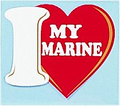













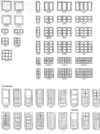





.svg/87px-Inter_Old_Logo_(2007-2014).svg.png)





